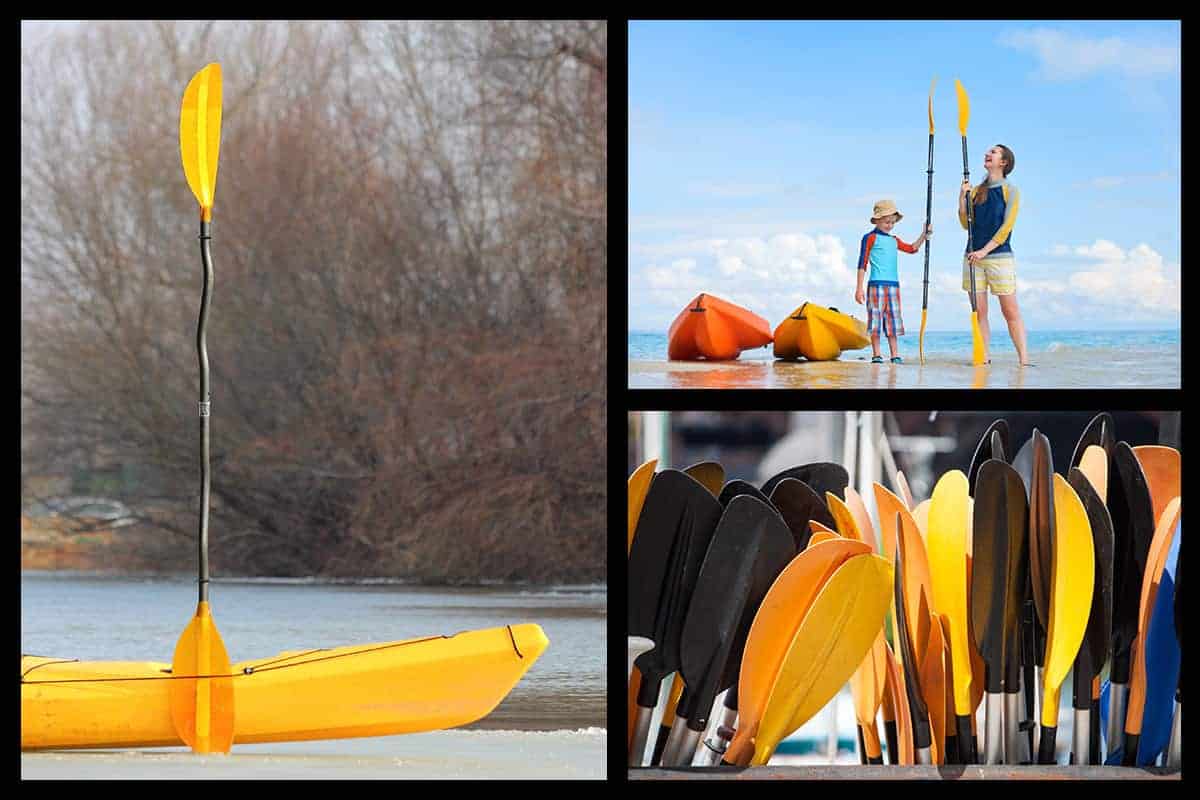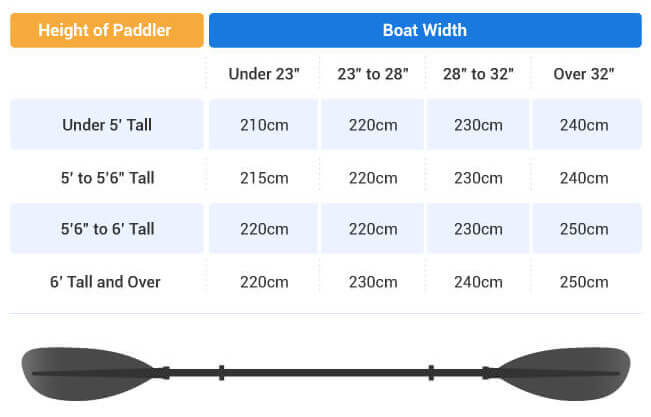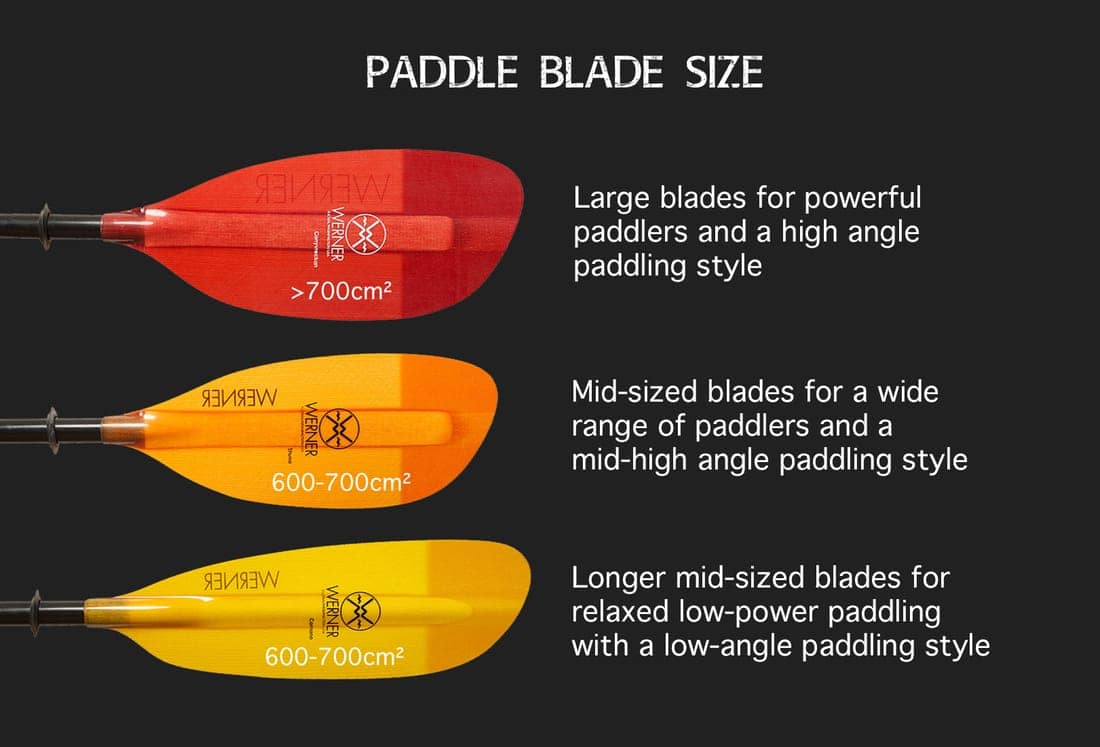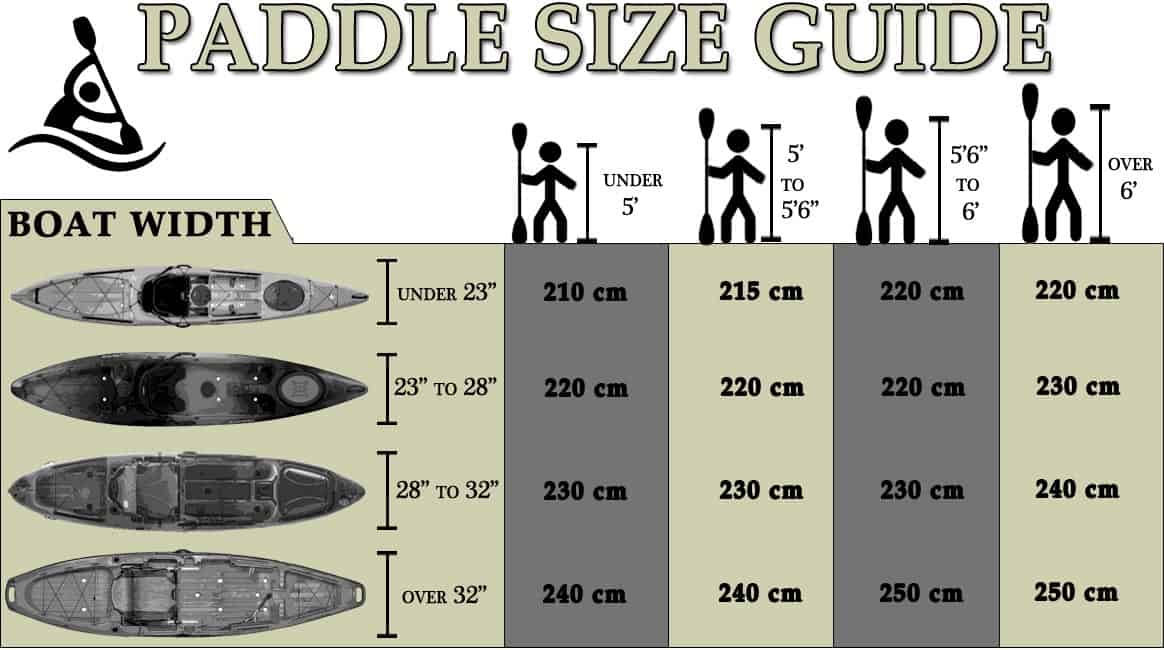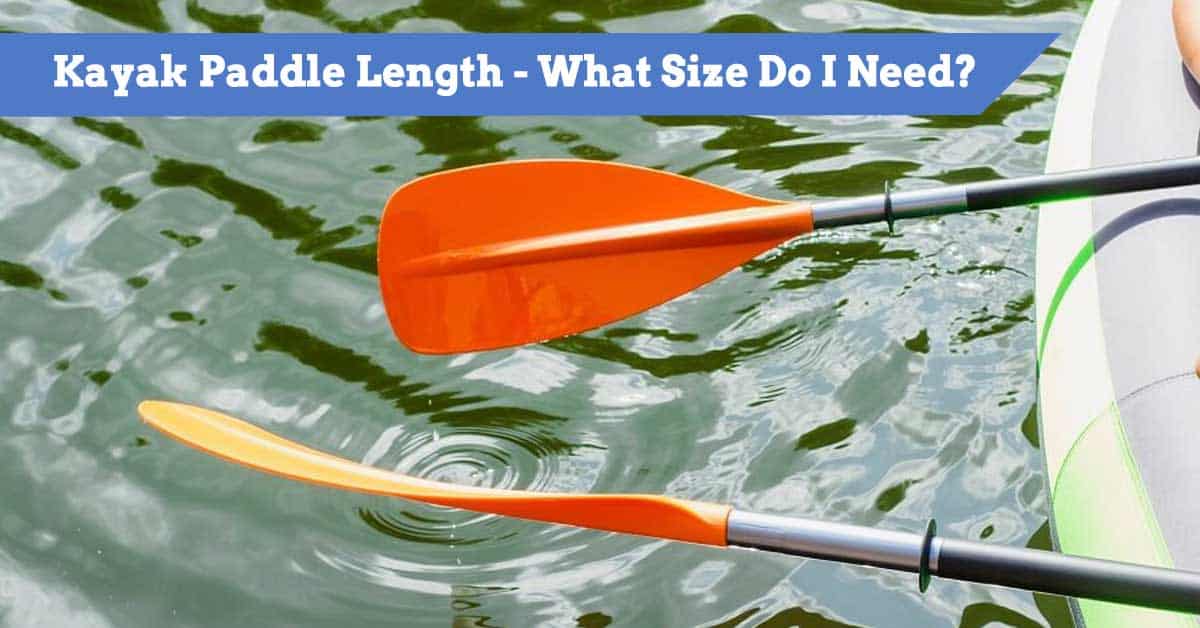As a passionate kayaker, I have come to realize the importance of choosing the right kayak paddle size for optimal performance and comfort on the water. It may seem like a small detail, but using the wrong size paddle can lead to a host of issues that can hinder your paddling experience.
One of the main reasons why choosing the right kayak paddle size is crucial is because it directly affects your performance on the water. A properly sized paddle allows you to generate more power with each stroke, resulting in faster and more efficient paddling. On the other hand, using a paddle that is too long or too short can cause you to exert unnecessary energy and struggle to maintain speed.
Comfort is another key factor when it comes to selecting the right kayak paddle size. Using an ill-fitting paddle can lead to discomfort and even pain in your hands, wrists, and shoulders over time. This can greatly diminish your enjoyment of kayaking and potentially lead to injuries if not addressed.
Key Takeaways
- Choosing the right kayak paddle size is crucial for efficient paddling and maximum comfort.
- Measuring yourself properly is important to find the perfect kayak paddle size.
- Factors such as height, weight, and boat width should be considered when choosing a kayak paddle size.
- Blade shape and angle also play a significant role in efficient paddling.
- Proper maintenance and avoiding common mistakes can prolong the life of your kayak paddle.
Understanding Kayak Paddle Anatomy: Blade, Shaft, and Grip
To fully understand how kayak paddle sizing works, it’s important to familiarize yourself with its anatomy – specifically its blade, shaft, and grip.
The blade is arguably one of the most important parts of a kayak paddle as it directly interacts with water during each stroke. Blades come in various shapes such as dihedral (with two flat surfaces), asymmetrical (one side longer than the other), or symmetrical (both sides equal). Each shape has its own advantages depending on your paddling style and preferences.
The shaft connects both ends of a kayak paddle – blade at one end and grip at another. Shafts are typically made from materials like fiberglass or carbon fiber for durability while keeping them lightweight for ease of use.
Lastly, we have grips which are located at one end of a kayak paddle’s shaft. Grips come in different shapes and sizes to accommodate various hand sizes and paddling techniques. It’s important to choose a grip that feels comfortable in your hands, allowing for a secure and relaxed hold.
How to Measure Yourself for the Perfect Kayak Paddle Size
Now that we understand the different parts of a kayak paddle, let’s dive into how you can measure yourself to find the perfect paddle size.
To start, you’ll need a measuring tape or ruler, as well as your kayak. Begin by sitting in your kayak with proper posture – back straight and legs comfortably positioned. Measure the distance from the waterline to your nose while maintaining this position. This measurement will give you an estimate of the ideal paddle length for flatwater kayaking.
Next, consider your boat width when determining paddle size. Wider boats require longer paddles due to their increased distance from one side of the boat to another. A general rule of thumb is adding 8-10 inches (20-25 cm) to your estimated paddle length if you have a wider boat.
It’s also important to take into account personal factors such as height and weight when choosing a kayak paddle size. Taller individuals may require longer paddles while shorter individuals may benefit from shorter ones for better control and maneuverability.
Factors to Consider When Choosing a Kayak Paddle Size: Height, Weight, and Boat Width
| Factors to Consider | Details |
|---|---|
| Height | The height of the paddler is an important factor to consider when choosing a kayak paddle size. Taller paddlers will require longer paddles to ensure proper stroke technique and efficiency. |
| Weight | The weight of the paddler is another important factor to consider when choosing a kayak paddle size. Heavier paddlers will require larger blades and stiffer shafts to provide the necessary power and support. |
| Boat Width | The width of the kayak is also a factor to consider when choosing a paddle size. Wider kayaks will require longer paddles to reach the water and provide proper leverage, while narrower kayaks will require shorter paddles for better control and maneuverability. |
When it comes down to selecting the right kayak paddle size, there are several factors that need consideration – height, weight, and boat width being some of them.
Height plays an essential role in determining what length of paddle will suit you best on the water. As mentioned earlier, taller individuals generally require longer paddles due to their higher sitting position in relation to their kayak’s waterline.
Weight is another crucial factor as it affects how much power you can generate with each stroke using specific blade sizes. Heavier individuals typically benefit from larger blades as they provide more surface area to push against the water, resulting in increased propulsion.
Boat width is often overlooked but can greatly impact paddle size selection. Wider boats require longer paddles to reach the water effectively and maintain proper stroke technique. Conversely, narrower boats necessitate shorter paddles for better control and maneuverability.
Taking all these factors into account, it’s recommended to consult a kayak paddle sizing chart or seek advice from experienced kayakers who can provide personalized recommendations based on your specific measurements.
The Importance of Blade Shape and Angle for Efficient Paddling
While paddle length is crucial, blade shape and angle also play significant roles in achieving efficient paddling techniques.
Blade shape refers to the design of the paddle’s working end that interacts with the water during each stroke. Different blade shapes offer distinct advantages depending on your preferred paddling style and conditions.
Dihedral blades feature two flat surfaces separated by a ridge down the middle. This design reduces fluttering when slicing through water, providing stability during each stroke. Dihedral blades are ideal for beginners or those seeking a smooth and controlled paddling experience.
Asymmetrical blades have one side longer than the other, creating an offset angle between them. This design allows for more efficient forward strokes as it minimizes resistance when entering and exiting the water. Asymmetrical blades are commonly used by experienced kayakers looking for increased speed and performance.
Symmetrical blades have identical shapes on both sides without any offset angles. They offer balanced performance suitable for various paddling styles but may not excel in specific areas like speed or maneuverability compared to dihedral or asymmetrical designs.
How to Adjust Your Kayak Paddle Length for Different Conditions
Adapting your kayak paddle length according to different conditions can greatly enhance your overall kayaking experience.
For calm waters or leisurely trips where efficiency isn’t a top priority, using a longer paddle can provide more power with each stroke. This allows you to cover greater distances effortlessly.
In contrast, when navigating through narrow waterways or engaging in technical maneuvers, a shorter paddle length is recommended. Shorter paddles offer better control and maneuverability, allowing you to make quick adjustments and execute precise strokes.
It’s important to note that adjusting your paddle length may require some experimentation and fine-tuning. Start by making small adjustments and observing how they affect your paddling technique and comfort level. Over time, you’ll develop a sense of what works best for different conditions.
Choosing the Right Material for Your Kayak Paddle: Wood, Fiberglass, Carbon, or Aluminum
The material from which your kayak paddle is made can significantly impact its performance, durability, and cost.
Wooden paddles offer a classic aesthetic appeal while providing excellent durability. They are known for their natural flex properties that absorb shock during each stroke. However, wooden paddles tend to be heavier compared to other materials.
Fiberglass paddles strike a balance between weight and affordability. They are lightweight yet durable enough to withstand regular use on the water. Fiberglass also offers some flex properties similar to wood but at a lower cost.
Carbon fiber paddles are favored by many experienced kayakers due to their exceptional strength-to-weight ratio. These paddles are incredibly lightweight yet rigid enough for powerful strokes without sacrificing durability or performance.
Aluminum paddles are often considered entry-level options due to their affordability but lack the performance benefits of other materials mentioned above. While aluminum is durable and resistant against corrosion in saltwater environments, it tends to be heavier than fiberglass or carbon fiber alternatives.
When choosing the right material for your kayak paddle, consider factors such as budget constraints, desired weight reduction for extended trips or racing purposes if applicable), as well as personal preferences regarding aesthetics and feel on the water.
Maintenance Tips for Your Kayak Paddle: Cleaning, Storage, and Repair
Proper maintenance of your kayak paddle is essential to ensure its longevity and optimal performance.
Regularly cleaning your paddle after each use is crucial to remove any saltwater or debris that may have accumulated. Use a mild soap and water solution along with a soft cloth or sponge to gently wipe down the blade, shaft, and grip. Avoid using abrasive materials that could scratch or damage the paddle’s surface.
When it comes to storage, keep your paddle in a dry and cool place away from direct sunlight. Extreme temperatures can cause warping or cracking of certain materials like wood or carbon fiber. If possible, store your paddle horizontally rather than vertically to prevent unnecessary stress on the shaft.
In case of minor damage such as scratches or chips on the blade, you can use epoxy resin specifically designed for paddles to repair them. Follow the manufacturer’s instructions carefully when applying epoxy resin and allow sufficient curing time before using the paddle again.
Common Mistakes to Avoid When Sizing Your Kayak Paddle
While choosing the right kayak paddle size may seem straightforward, there are common mistakes that people often make which can negatively impact their paddling experience.
One common mistake is relying solely on height as a determining factor for selecting paddle length. While height provides a general guideline, it’s important to consider other factors such as boat width and personal preferences for control versus efficiency.
Another mistake is overlooking weight when choosing blade size. Heavier individuals typically benefit from larger blades as they provide more surface area for generating power during each stroke.
Additionally, failing to account for different water conditions when adjusting your kayak paddle length can hinder performance. It’s important to adapt your equipment according to varying conditions such as calm waters versus rough seas or narrow channels versus open expanses.
To avoid these mistakes, take into consideration all relevant factors including height, weight, boat width, personal preferences regarding control versus efficiency in different conditions, and seek advice from experienced kayakers if needed.
Advanced Techniques for Kayak Paddling: High-Angle vs. Low-Angle Strokes
Once you have found your perfect kayak paddle size, it’s time to explore advanced paddling techniques that can further enhance your performance on the water.
High-angle and low-angle strokes are two common techniques used by kayakers depending on their paddling style and goals.
High-angle strokes involve a more aggressive paddling technique with a higher shaft angle relative to the water surface. This technique is characterized by shorter, more powerful strokes that generate greater propulsion but require more energy expenditure. High-angle strokes are commonly used in whitewater or surf kayaking where quick acceleration and maneuverability are crucial.
On the other hand, low-angle strokes utilize a shallower shaft angle with longer, smoother strokes. This technique is ideal for recreational or touring kayaking where efficiency and endurance are prioritized over speed. Low-angle strokes require less energy expenditure but provide consistent forward motion over longer distances.
Choosing the right stroke for your paddling style depends on factors such as intended use (whitewater versus touring), personal fitness level, desired speed versus endurance trade-offs, as well as comfort during extended periods of paddling.
Finding Your Perfect Kayak Paddle Size for Maximum Performance and Comfort
In conclusion, choosing the right kayak paddle size is crucial for maximizing your performance and comfort while out on the water. By understanding the anatomy of a kayak paddle – blade, shaft, grip – you can make informed decisions about which size will suit you best based on factors such as height, weight, boat width.
Blade shape and angle also play significant roles in achieving efficient paddling techniques tailored to your preferences and conditions. Adjusting paddle length according to different situations allows you to adapt to varying water conditions while maintaining control or efficiency when needed.
Consideration of material options like wood, fiberglass, carbon fiber, or aluminum ensures that your paddle meets your needs in terms of performance, durability, and budget.
Proper maintenance and avoiding common sizing mistakes will help prolong the lifespan of your paddle while ensuring optimal performance. Lastly, exploring advanced techniques such as high-angle versus low-angle strokes can further enhance your paddling experience based on personal goals and preferences.
By following this comprehensive guide and taking into account all the factors discussed, you’ll be well-equipped to find your perfect kayak paddle size for maximum performance and comfort on every adventure. Happy paddling!
FAQs
What is the importance of sizing your kayak paddle?
Sizing your kayak paddle is important because it affects your performance on the water. A properly sized paddle can help you paddle more efficiently, reduce fatigue, and prevent injury.
How do I determine the correct paddle length for my kayak?
The correct paddle length for your kayak depends on your height, the width of your kayak, and your paddling style. A general rule of thumb is to add 10-12 inches to your height to determine the correct paddle length.
What is the difference between a high-angle and low-angle paddle?
A high-angle paddle is used for a more aggressive paddling style, with a higher stroke rate and more power. A low-angle paddle is used for a more relaxed paddling style, with a lower stroke rate and less power.
What materials are kayak paddles made of?
Kayak paddles can be made of a variety of materials, including wood, aluminum, fiberglass, carbon fiber, and plastic. Each material has its own advantages and disadvantages in terms of weight, durability, and cost.
How do I know if my paddle is the right weight for me?
The right weight for your paddle depends on your strength and endurance. A lighter paddle can be easier to use for longer periods of time, but may not provide as much power. A heavier paddle can provide more power, but may cause fatigue more quickly.
What is the difference between a one-piece and two-piece paddle?
A one-piece paddle is a single, solid piece of material, while a two-piece paddle can be taken apart for easier storage and transportation. Two-piece paddles are generally more convenient, but may not be as strong as one-piece paddles.

